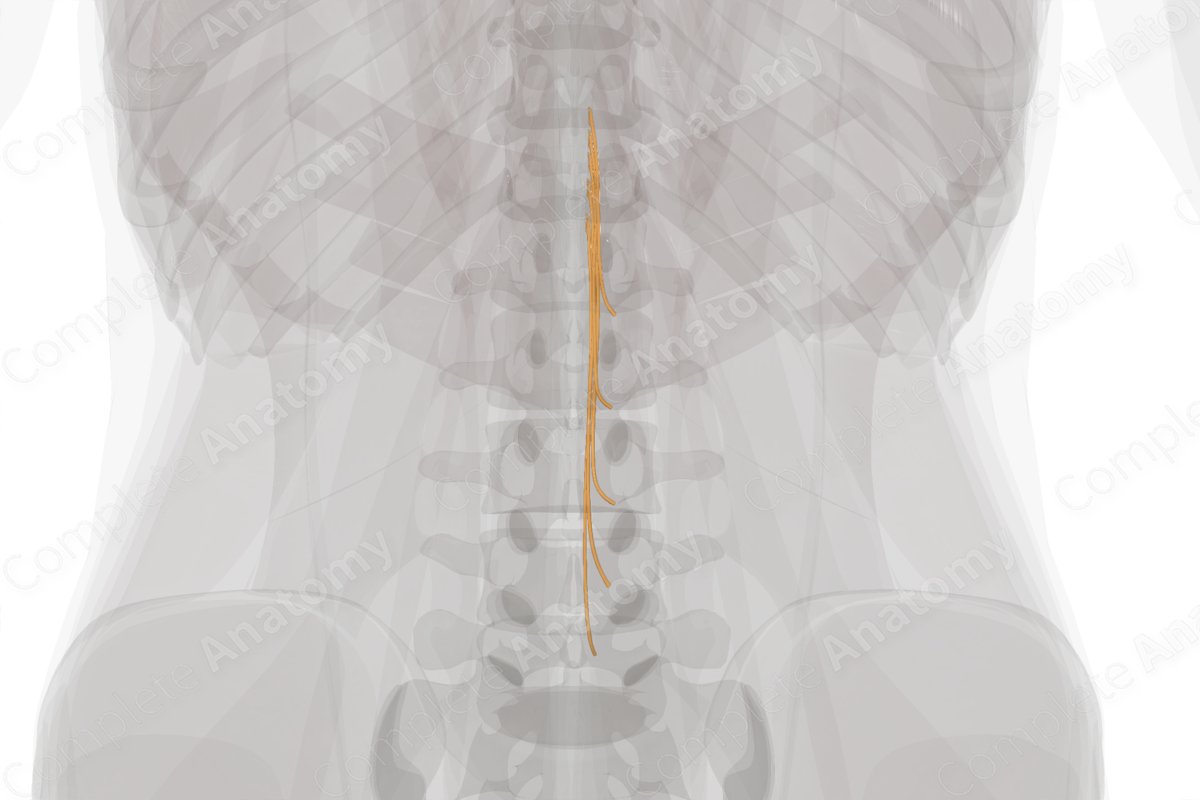
Posterior Roots of Lumbar Nerves (Left)
Radices posteriores nervorum lumbalium
Read moreDescription
The posterior (dorsal or sensory) roots of lumbar nerves arise bilaterally from the posterior aspect of the spinal cord as a series of smaller rootlets which merge to form the posterior root. Their axons generally run from peripheral sensory organs into the dorsal horn of the spinal cord. A swelling of the posterior root is located just medial to the spinal nerve. This swelling is referred to as the spinal (dorsal root) ganglion and is the site at which cell bodies for these sensory axons reside.
The posterior roots contain information traveling towards the spinal cord. They consist of sensory axons that carry signals such as touch, temperature, and pain. In addition, autonomic afferent fibers enter the spinal cord via the posterior roots.
Posterior lumbar roots run inferiorly, anterior to the denticulate ligaments towards the corresponding intervertebral foramen. Here they merge with the corresponding anterior (ventral or motor) root to form a lumbar nerve.




